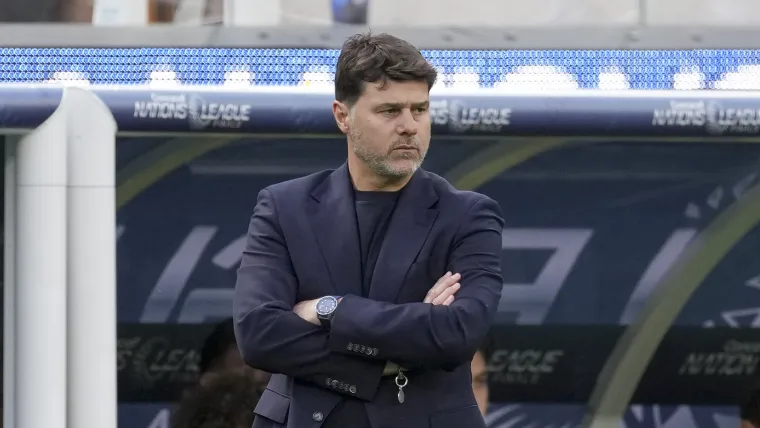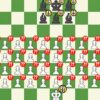
As the clock ticks relentlessly towards the 2026 FIFA World Cup, hosted on home soil, the United States Men`s National Team (USMNT) finds itself at a pivotal juncture. Nine months might seem a generous window, yet in the high-stakes world of international football, it`s a tightrope walk between preparation and performance. Guiding this ambitious journey is head coach Mauricio Pochettino, a man renowned for his demanding yet innovative approach. His agenda is clear, his philosophy intriguing: a meticulously planned pursuit of what he terms “organized chaos.”
This isn`t merely a catchy phrase; it`s the tactical blueprint for a team aiming to shed the shackles of predictability. Pochettino, with a hint of professional disdain, declared, “I hate being predictable.” A sentiment many fans of the beautiful game would echo. The challenge lies in translating this disdain into a potent, on-field reality for a squad that, despite boasting talents like Christian Pulisic, has often struggled to consistently deliver genuinely impressive offensive displays.
The Paradox of Designed Unpredictability
Pochettino`s vision of “organized chaos” is, at its core, a sophisticated paradox. It demands that players adhere to a foundational structure – a non-negotiable tactical framework – while simultaneously being empowered to improvise, to deviate, and to, well, create chaos. The goal isn`t anarchic individualism but rather a collective spontaneity that exploits defensive weaknesses through unexpected movements and intelligent interplay. Imagine a finely tuned orchestra where the conductor occasionally cues a section to brilliantly improvise, knowing they’ll seamlessly return to the symphony’s core rhythm. It’s a high-wire act, requiring both discipline and a certain daring spirit.
For the USMNT, this means nurturing the creative instincts of its attacking players within a system that ensures defensive solidity. Defenders, for instance, might be granted offensive freedom but must remain disciplined anchors, ensuring their teammates are correctly positioned. It’s a delicate balance, one that Pochettino believes is essential to overcome opponents who might otherwise easily read and counter a more rigid tactical setup.
Expanding the Arsenal: A Sixty-Strong Player Pool
Beyond the tactical chalkboard, Pochettino`s strategy involves an unprecedented expansion of the player pool. With roughly 60 players currently under consideration, some critics might whisper about diluted chemistry or a lack of cohesion. Yet, Pochettino views this as a non-negotiable step, a commitment to leaving “no stone unturned.”
His logic is simple: talent can emerge unexpectedly, and at an accelerated pace. The cautionary tale of discovering a burgeoning star too late is a scenario he actively seeks to avoid. This extensive scouting, exemplified by his interest in young prospects like 18-year-old Noahkai Banks, ensures that every potential asset is identified and assessed. It’s an acknowledgment that the landscape of football is ever-shifting, and today’s fringe player could be tomorrow’s linchpin.
This expansive approach directly feeds into another core tenet of Pochettino’s reign: the absolute lack of a fixed hierarchy. As defender Chris Richards succinctly put it, “Every time is a chance to come in here and earn your spot… your place is never safe.” This fierce meritocracy, while potentially unsettling for established players, is designed to extract peak performance and foster an environment of constant competition. It’s a psychological tactic, a subtle reminder that complacency is the deadliest opponent.
The Return of a Catalyst: Sergino Dest`s Role
The implementation of “organized chaos” receives a significant boost with the return of Sergino Dest from a year-long ACL injury. Dest, described by Richards as “probably the most attacking fullback in the world,” embodies the very qualities Pochettino seeks. His ability to play high up the pitch, function almost as a midfielder, and create superiority from various positions is crucial. Pochettino envisions Dest not just as a defensive wide player, but as a fluid, dynamic force capable of creating space and even scoring goals.
Dest himself has noted a “more strict” environment under Pochettino compared to previous regimes, a positive indicator of the coach`s no-nonsense approach. This strictness isn`t about stifling creativity but about embedding the fundamental discipline required for the “chaos” to remain “organized.” The coaching staff’s proactive support during Dest’s recovery further highlights their commitment to individual player development within this demanding framework.
The Road Ahead: Fine-Tuning for Glory
The recent Gold Cup, used as a learning ground for inexperienced players, provided the initial brushstrokes of Pochettino’s tactical canvas. Friendlies against formidable opponents like South Korea and Japan serve as the final opportunities to expand the player pool. Beyond these, a crucial series of approximately ten games awaits – a period designated for fine-tuning, solidifying combinations, and perfecting the intricate dance of organized chaos.
The journey to World Cup 2026 is fraught with expectations. Pochettino`s aggressive, forward-thinking approach, coupled with his unyielding demand for excellence and adaptability, suggests the USMNT is being sculpted into a side that will be anything but predictable. Whether this grand experiment of designed spontaneity culminates in groundbreaking performances remains to be seen, but one thing is certain: under Pochettino, the USMNT promises an intriguing, perhaps even chaotic, spectacle.










